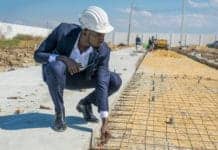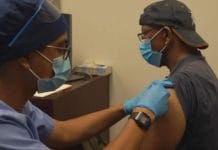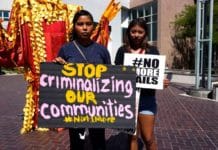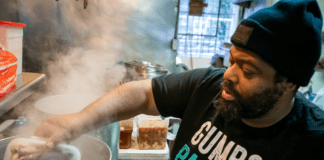
Positive cases and rates, displayed on the map by zip code, reaffirm San Francisco’s ongoing focus on equity.
by San Francisco Joint Information Center
San Francisco – Mayor London N. Breed and Director of Health Dr. Grant Colfax today released a new map that displays confirmed cases of coronavirus in San Francisco by zip code. The map shows that the populations and locations in the City that are most affected by health disparities, income inequality and structural racism are also the most affected by the pandemic to date. This data demonstrates the importance of the City’s ongoing focus on equity and efforts to support vulnerable populations during the coronavirus response.
San Francisco has prioritized vulnerable populations in its coronavirus response, including those over 60, with underlying health conditions, people experiencing homelessness and those living in congregate settings. The City has been working with community leaders and supporting outreach to community in multiple ways. This includes providing in-language support in Spanish, Chinese and more languages in key intervention areas, including the contact tracing program, and all public materials about the Stay at Home Order, face coverings and other ways that people can protect themselves.
The map reflects only the people who have tested positive in a given zip code and is not a complete picture of the whole population. It includes a case count and rate of cases for each location, based on the data collected to date. It does not show the overall prevalence or the total numbers of cases of coronavirus in the neighborhoods, since most people have not been tested.
“I want to stress that when it comes to coronavirus, no zip code or neighborhood is inherently safer than another. Every San Franciscan should continue to follow public health requirements – stay home, stay six feet apart, and cover your face when you’re outside for essential needs. This map should not make anyone more relaxed, or more fearful,” said Mayor Breed. “We must make progress reducing the spread of coronavirus everywhere in our city in order to emerge from this pandemic.”
The numbers of cases in the City – just over 1,200 – are small compared to the overall population of San Francisco, which is over 800,000. Therefore, any increase in the number of tests conducted will greatly influence zip code case counts and rates. City officials cautioned against drawing inaccurate conclusions from the map.
“Health emergencies exploit the inequalities in society. People with fewer resources, chronic illnesses, underlying health conditions and who have experienced institutionalized stigma and discrimination are going to be more at risk for getting sick,” said Dr. Colfax. “This map is sobering. But, unfortunately it is not surprising.”
Our response must also be rooted in trusting the resilient communities most at risk of exposure to the coronavirus to guide a community-led response.
The 94107 zip code, which includes SoMa, currently shows one of the highest rates of cases in the city. This is partially due to the MSC South Shelter being located in that zip code. The shelter is the location of the city’s largest outbreak, with 96 cases among guests to date.
The highest number of cases are currently in the 94110 zip code, in the Mission. Citywide, 25 percent of positive cases are among Latinos, although they made up only 15 percent of the San Francisco population. This likely reflects risk factors such as living in crowded conditions, and whether residents have sufficient support to stay home and reduce their outings.
The City has also seen the impact on the Latino community at Zuckerberg San Francisco General Hospital, where more than 80 percent of the hospitalized coronavirus patients are Latino, which is a much higher rate than the usual Latino patient population of about 30 percent at that hospital.
“Nationally, people of color and low-income communities are hardest hit by the coronavirus. For many, the disparate impact of COVID-19 on people of color comes as no surprise,” said Sheryl Davis, executive director of the San Francisco Human Rights Commission. “The systemic problems of food insecurity, unequal housing access, limited transit options and opportunity gaps in communities of color contribute to the impact the pandemic is having on our Asian Pacific Islander, Black and Latino communities.
“We must acknowledge a need to shift how our city systems partner and collaborate with those most impacted to change outcomes, not just during this crisis, but moving forward. Our response must also be rooted in trusting the resilient communities most at risk of exposure to the coronavirus to guide a community-led response.
“As the community tells us what they do and don’t need to feel safe, prepared and remain healthy, we are working to provide competent, timely health guidance, essential needs and improved access to care for our most vulnerable populations.”

Prior to the COVID-19 outbreak in San Francisco, the San Francisco Human Rights Commission (HRC) and the Office of Racial Equity were focused on making the City more equitable for low income people, communities of color and other underserved residents.
Following the Stay Home Order on March 16, HRC convened a weekly roundtable to identify community needs and minimize geographic, cultural and racial impacts of the virus. The roundtable includes the Mayor’s Office, the Housing Authority, HOPE SF, Office of Economic and Workforce Development, Department of Disability and Aging Services, Department of Public Health and community-based organizations.
The HRC roundtable has guided the distributions of 1,500 meals a day throughout the City, distributed thousands of distance learning materials, conducted community outreach, and hosted community webinars focused on helping vulnerable populations and communities of color. The roundtable has also funded programs to provide emergency housing and essential needs for vulnerable and underserved residents.
Most recently, HRC’s outreach team has been distributing face coverings and information cards in partnership with community stakeholders and the San Francisco Police Department. Importantly, the City’s Emergency Operations Center has embedded an equity officer into its operations, and the officer is focused on ensuring the City’s response is intersectional and does not exacerbate pre-existing structural issues.
San Francisco’s efforts to promote equity in this current health emergency began in late January and include:
Inclusion of community partners in San Francisco’s Emergency Operations Center (EOC) through the establishment of a community branch made up of community, faith and private sector organizations.
Equity officer and team embedded at the EOC
Multilingual community forums and neighborhood outreach efforts in partnership with local community organizations.
Upon learning that some members of the Latino community are reluctant to work with contact tracers, DPH held a webinar geared to Spanish-language media. DPH conducted a demonstration in Spanish and emphasized that immigration status has no bearing whatsoever on the work.
DPH has opened COVID-19 symptom screening and testing sites in the Castro-Mission neighborhood and at Zuckerberg San Francisco General Hospital, in the heart of the Mission and Potrero Hill.
DPH opened the first Field Care Clinic in San Francisco in the Bayview. This will ensure that neighborhood residents have access to urgent care and primary care for the duration of the pandemic, no matter how full the hospitals get. The Field Care Clinic is also a COVID-19 testing site.
The City has also supported the health of the community in SoMa and the Tenderloin and Chinatown through mandated cleaning of SROs and multi-lingual outreach for those diverse neighborhoods.
In the homeless community, the City has increased social distancing and food access in shelters and has been moving people from shelters into hotels for their safety. The City responded aggressively to an outbreak at MSC South, conducting aggressive case investigations, mass testing, moving everyone out and deep cleaning the building.
The map is posted on the City’s Coronavirus Data Tracker DataSF.org/COVID19 .
The San Francisco Joint Information Center can be reached at dempress@sfgov.org.

 Store
Store







